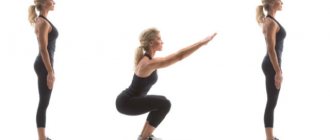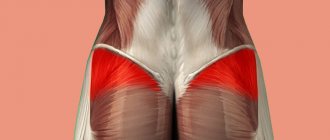What are the benefits of walking?
Many are accustomed to thinking that if you get cardio exercise, it must be through running, cycling or skiing. However, walking, just like the exercises listed, strengthens the cardiovascular system, being the most non-traumatic type of activity.
Here are just some of the most noticeable benefits that walking gives your body:
- helps you lose weight or maintain a healthy weight;
- long and fast walks increase endurance;
- helps prevent or manage chronic diseases;
- for people leading a sedentary lifestyle, 20 minutes of walking a day reduces the risk of premature death by 16-30% (American Journal of Clinical Nutrition study);
- for older people, an hour's walk 3 times a week reduces the risk of dementia;
- walking strengthens the heart;
- relieves stress, reduces anxiety;
- Walking as a means of cross-training allows your joints and muscles that are actively involved in running to rest;
- On a rest day from training, walking is an effective way to burn fat and increase blood flow for muscle recovery.
How to walk correctly
Let's start with your cadence or stride frequency. Take short and frequent steps, as long strides can cause pain in your feet and hips. For an adult, it is optimal to take 113 steps per minute, but an accelerated pace will require about 150 steps per minute.
If you decide to replace running with walking today, for optimal results and calorie expenditure, double the walking time or spend more time. Were you going to run for 40 minutes? Then walk at a fast pace for 80 minutes.
But if you don't have enough time to walk for two hours, break up your walk. Take a walk during your lunch break and then walk home from work. This way, you will have even more free time for family and relaxation.
In general, walking, unlike running, is not incorrect from a technical point of view. Inflammation of the periosteum, stress fractures, and inflammation of the Achilles are just a small part of the injuries suffered by runners. Runners have a much higher risk of exercise-related injuries than walkers. Walkers have a 1 to 5% risk of injury, while runners have a 20 to 70% risk of injury.
marathon and half marathon training plans and start training today!
Human stride length
The average gait length depends on factors such as gender, height, race, weight, gait (manner), and can range from 30 cm to 1 meter. But the average length has been determined: for a man it is 0.76 m, and the average length of a woman’s step is 0.67 m.
Each person's step is approximately the same size. There is a formula for determining the average step length depending on height .
Length.W = P:4 + 0.37
where: L.W – step length (m),
P – height.
Thus, the average step of a person 1.79 m tall is:
Length.W = 1.79: 4 + 0.37 = 0.82 m
In practice, the length of a person's step can be measured empirically . To do this, you need to measure out a section 10 meters long and walk along it, counting the number of steps. Then divide 10 m by this amount, and we get the length of one.
Let's say a pedestrian took 13 steps in 10 meters. We get:
Length.W = 10: 13 = 0.77 m
Important! In the Soviet Union, the average step length was determined. It was 1.5 meters in two, or 3 meters in four steps.
How many calories are burned by walking in 1 hour?
If you want to burn more calories and lose weight faster, it is, of course, better to opt for running. However, walking also provides many health benefits and helps you maintain a healthy weight.
Running will require twice as many calories as walking. However, if after running you eat a portion twice as large as usual, you should not expect weight loss.
A man weighing 72 kg will burn 300 calories in an hour of walking at a speed of 5.5 km/h. When running at a speed of 8 km/h, the same man will burn 600 calories. To achieve results in losing excess weight, we recommend combining these two types of exercise.
For example, the author of this article does not use transport if the desired destination is 3 km away or if there is a trip with transfers: you can walk to the stop from where you can leave directly. In addition, sometimes during evening traffic jams it is much faster and more pleasant to walk home or an intermediate stop than to hang on the handrail in a crowded bus.
For owners of personal vehicles, the recommendation is this: do not use your car for short distances. There are several advantages here: health benefits, no need to look for parking, saving on gasoline, reducing the load on road infrastructure. Walking is environmentally friendly!
Don't forget that it's not just your walking speed that affects the amount of energy you consume. Walking uphill will require much more calories than walking on the plain. You can find a hilly area outside or set the incline on your treadmill to 5%. Gradually increase the incline to maximum, usually 15%.
Despite all the obvious benefits of walking, you still have to watch your diet if you want to lose weight. At the National Laboratory. Lawrence Berkeley (USA) collected data from more than 15,000 walkers and 30,000 runners to determine which group lost weight more effectively.
The study found that runners were generally able to control their weight more effectively and were overall slimmer. One likely reason for this is the aftereffect of intense exercise, which increases metabolic rate and increases calorie consumption for 14 hours after activity. There is no such afterburning of calories in walking.
Another reason runners lose weight better is because of their post-workout caloric intake. In a study published in the Journal of Obesity, researchers found that walkers were more likely to overeat than runners after a 60-minute workout.
After the training, all study participants were invited to a buffet where they could choose their dishes. The walkers ate 50 more calories than they burned during exercise, while the runners ate 200 fewer calories than they burned during exercise. Runners were also found to have higher levels of peptide YY, a blood hormone that suppresses appetite. This was not observed among pedestrians.
Scales
You have been quite expressive these past few months as your ruling planet Venus has been and will be in Gemini, your sister element of air, until August. Look for contacts with foreigners, they can play a key role in your life until the end of summer. Personal reputation becomes public knowledge. Your creativity, especially oral, will have weight in group activities or among friends. Don't overdo your burning passion for goals and ambitions. Enlightenment comes first in relation to home, family or security, and then in relation to some romantic, creative or enjoyable activity.
How fast and how long should you walk to lose weight?
Note that a leisurely walk in the park will not give you enough exercise to increase calorie burning. You need to walk quickly, although, of course, not as quickly as sports walkers rush.
Active burning of calories begins not from the fact that you make any movements, but from an increase in heart rate. For most people, brisk walking starts at 5 km/h (12 min/km). When walking 7 km/h (08:34 min/km) you will burn the same number of calories as when running at the same pace, but even a beginner can run at this pace, but not even an experienced runner can walk.
Trainers recommend varying your walking pace, just as we do during running workouts. Walk at a fast, uncomfortable pace for two minutes, then slow down to a comfortable pace. Repeat as many times as you like. In addition to actively burning calories, it will improve your aerobic fitness. Your heart rate should rise to at least 100 beats at an accelerated pace.
If you run in addition to walking, an hour of brisk walking is enough to increase your daily calorie expenditure. Thus, in Kenneth Cooper’s work “The New Aerobics: A System of Health-improving Physical Exercises for All Ages,” it is said that to achieve satisfactory fitness, you need to walk 6.5 km at an accelerated pace. In general, this is enough for an hour's walk.
So, let’s summarize the effect of walking on weight loss:
- Running burns more calories than walking, but maintaining a high intensity for a long time is more difficult.
- Due to the lower intensity of walking, a higher percentage of calories burned comes from fat burning, but there is no afterburn effect.
- Both walking and running burn enough calories to help you lose weight, but only if you make the necessary changes to your diet at the same time.
Average and maximum indicators
It should be understood that there is a concept of average speed when running and maximum. For track and field athletes, it differs at different parts of the distance. During the section of the path after the start, it is small: the athlete is just accelerating. And its peak is reached either closer to the finish (if it was a 60, 100 or 200-meter start), or towards the middle, if it’s a four-hundred-meter race (even a professional cannot run at the limit of all four hundred meters). At medium and long distances, the tactics of stayers can be different: powerful acceleration at the beginning, jerks along the way in the middle, a stormy finishing spurt, or all these elements combined.
The average speed of a person when jogging is 9 km/h. The body adapts perfectly to a measured, not too burdensome load and is able to maintain muscle work for a fairly long time.
What muscles work when walking?
At a slow walking pace of less than 5 km/h, muscle activity is minimal. Power walking starts at 6 km/h. At this pace, the legs, hips, and knees are actively strengthened. The abdominal and arm muscles are used to a lesser extent; the core muscles act as a stabilizer.
When walking uphill, a good load is placed on the quadriceps, gluteus maximus and calf muscles.
Nordic walking, in addition to those already mentioned, uses the muscles of the cervical-brachial region, pectoral and scapular muscles, triceps and biceps.
Tempo, what is it?
There is such a thing as running pace. It indicates how long it takes a person to cover a certain distance. This indicator is convenient to use when training, choosing how long it takes to cover a given distance in order to achieve the desired effect: lose weight, improve endurance, train the heart, etc. For example, the pace for training the heart muscle and fat oxidation can vary among people of different sizes and fitness from 5:30 to 7:00 minutes/km. For cross-country, a pace of around 5:00 min/km is suitable. But all indicators are individual, since people are all different.
How long is it recommended to walk each day?
Everyone has probably heard about 10 thousand steps a day to get rid of all diseases and problems? As in the case of 2 liters of water, this is a stereotype. And it comes from Japan, where the inventor of the first electronic pedometer, Yoshiro Hatano, called it Mampo-kei. Translated into Russian, this means “10,000 steps.” One version of why Yoshiro named his invention this way is that it’s just a beautiful round number.
10,000 steps is approximately 8 km. And many, of course, are frightened by this figure. There is no need to take it literally, because there are a lot of variables: what surface a person moves on, at what speed, in what weather conditions and, finally, what kind of training a person has. Even going up from the 1st floor to the 18th-20th floor a couple of times carries a load that is much greater than idle wandering throughout the day.
A simple rule: less is better, but more is more active. Research from the Active 10 Project shows that 3 brisk, 10-minute walks a day are healthier than 10,000 slow steps. In addition, short but fast walks are better suited for the modern rhythm of life.
The recommended rate of physical activity for a person is at least 150 minutes per week. Such recommendations are given by the World Health Organization. Walking or other activity should be done at least 30 minutes a day, 5 times a week. And this is just to maintain health. Note that physical activity can be distributed throughout the day:
- 10 minutes of brisk walking three times a day;
- or 20 minutes in the morning and 10 minutes later during the day.
Doctors advise counting not the steps taken, but the total time of physical activity, but if you are still interested in the numbers of steps taken, there are now many fitness bracelets on the market with a step counting function. The same mobile applications can be installed on any smartphone.
What types of walking are there?
Globally, walking can be divided into three types:
- natural movement;
- sports and recreational walking;
- military applied movement.
This group includes the Olympic track and field discipline of race walking, in which the athlete is required to constantly keep his foot in contact with the ground.
Nowadays Nordic walking with the help of specially designed poles is experiencing an explosion in popularity. For those who want to lose weight, walking with poles is the most effective activity, since the calorie burning here is almost the same as in running. A noticeable advantage of Nordic walking is that it activates not only the leg muscles, but also the muscles of the upper body.
Read on the topic: Nordic walking: benefits, technique, beginner mistakes
Health path is a gentle form of health-improving walking. The patient usually walks under the supervision of a doctor along marked routes. One of the first health path routes in Russia was laid in 1901 in Kislovodsk. A health path involves dosed physical activity taking into account the landscape.
Healthy skiing, just like healthy running, should not cause discomfort to the practitioner. In winter, skiing becomes a good alternative to running, since such activities involve almost all muscle groups without impact on the joints. Skiing also develops your sense of balance.
Pedestrian speed limit
Some countries have decided to limit the speed of pedestrians as part of the speed limit for vehicles. For clarity, some background is needed. In Spain, a small town decided to limit car speed to 30 km/h. In this regard, the number of accidents on the roads has significantly decreased, and the number of injuries and deaths of pedestrians in collisions with cars has also decreased. At the same time, the town authorities decided to pay attention to the pace of movement of the people themselves. Pedestrians were also limited in their speed in crowded places. And athletes and lovers of morning jogging (and there are many such people there) were allocated special park areas where the increased pace of movement will not negatively affect the general mass of the people.
How far can a person walk?
For most healthy people, walking at a speed of 5 km/h is easy, and walking for 2 hours without stopping is usually not difficult. But how many kilometers can a person cover in a day?
Only a trained person can walk without stopping all day long, and for the vast majority of people, a continuous walk for 4-5 hours will be very difficult. There is already a high risk of injury if there has been no preliminary preparation with a gradual increase in volume.
In a day, with proper physical shape, you can walk 100+ km. For example, every year in Novosibirsk the Club of Tourists and Mountaineers of the SGUPS (NIIZhT) organizes the so-called “Sotka”, the participants of which complete a 100 km hike in 24 hours.
How long does it take to complete a marathon?
A standard walking speed of 5 km/h will allow you to cover the 42.2 km marathon in 8.5 hours, but such a long walk requires months of preparation, as well as good and comfortable shoes.
Professional race walkers will, of course, complete the marathon faster than most recreational runners. For example, to receive the title “candidate master of sports of Russia,” men must walk 50 km in 4:45:00 at a speed of 10.53 km/h (05:42 min/km), that is, 42.2 km at this pace. will pass in 4 hours. For masters of sports, the standard for 50 km is 4:20:00 (11.54 km/h – 05:12 min/km). Converted to a marathon distance, this equals 3 hours 40 minutes.
The world record in 50 km race walking belongs to the French athlete Yoann Dini - 3:32:33 (14.1 km/h - 4:15 min/km). He would cover 42.2 km at a walk in 2 hours 59 minutes!
Time of the first
They began to find out who the fastest was in Ancient Greece. At the first Olympic Games, sprinters covered a distance of 1 stage (178 m). The race time was not recorded then. It was enough for the spectators to see the winner take the lead. The crowd in the arena was buzzing with delight.
Undisputed champion in running at the Games of 776 BC. e. became a certain Koreb, Greek by origin. Alas, this is the only record of that time that history has preserved for us. With the fall of Ancient Greece, the cult of a healthy body fell into decline, and with it the Olympic Games themselves. The first real records began to be recorded at the beginning of the 20th century. The necessary equipment for this has become available. The first fastest person in the world to run was a white American, Donald Fithian Lippincott (1893-1962). At the Olympic Games in 1912, he set the first world record in the history of running as a sport. He covered the 100-meter mark in 10.6 seconds. The victory brought glory not only to Donald, but also to the entire University of Pennsylvania, where the young man was then studying.











